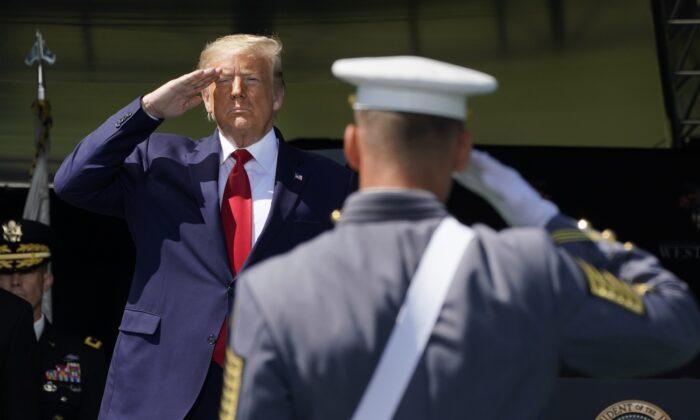The new duties target key vehicle components but include exemptions for USMCA-compliant parts to preserve North American supply chains.
A 25 percent tariff on imported automobile parts took effect on May 3, marking a significant step in President Donald Trump’s effort to reduce U.S. dependence on foreign supply chains and boost domestic manufacturing jobs.
The new duties—authorized under a March 26
proclamation—apply to key components used in passenger vehicles and light trucks, including engines, transmissions, and electrical systems.
The tariffs affect imports from all countries, although parts that meet U.S.-Mexico-Canada Agreement (USMCA) requirements are exempt, in a bid to preserve the tightly interwoven North American auto supply chain.
According to updated
guidance issued by U.S. Customs and Border Protection (CBP) on Thursday, USMCA-compliant parts will not face the new duties—so long as they are not part of knock-down kits, or bulk component packages intended for assembly.
The tariffs are part of a broader trade policy agenda that includes earlier duties on imported vehicles and steel. However, an
executive order signed by Trump on April 29 prohibits overlapping tariffs—known as “stacking”—on the same item. The order is intended to prevent the compounding of multiple tariffs and to reduce the cost burden on manufacturers operating in the United States.
To further soften the impact on domestic producers, the administration also
unveiled an “import adjustment offset.” Available to automakers that conduct final vehicle assembly in the United States, the program allows them to reduce their tariff obligations on imported parts based on their total domestic output.
Specifically, manufacturers can offset 3.75 percent of the total Manufacturer’s Suggested Retail Price (MSRP) value of U.S.-assembled vehicles produced from April 3, 2025, through April 30, 2026, and 2.5 percent for those assembled in the following year. The offset roughly corresponds to imported parts making up 15 percent of a vehicle’s value in year one, and 10 percent in year two.
In a proclamation, Trump said the revised tariff structure would “more effectively eliminate the national security threat” by accelerating the shift away from foreign manufacturing and reinforcing U.S. capacity to produce critical automotive components.
A White House
fact sheet accompanying the proclamation highlighted the scale of the challenge. In 2024, only 25 percent of the content in vehicles sold in the United States was American-made. Although 8 million vehicles were assembled domestically, their average U.S. content hovered between 40 and 50 percent. The nation also ran a $93.5 billion trade deficit in auto parts.
While the Trump administration says the tariffs will ultimately revitalize the U.S. auto industry, industry analysts warn of short-term consequences, including higher prices and supply disruptions.
A recent
estimate from the Center for Automotive Research projected that the tariffs could increase costs for U.S. automakers by as much as $108 billion this year alone.
Stephanie Brinley, associate director of auto intelligence at S&P Global, cautioned that the most severe impacts on production and sales are likely to emerge in 2026.
“Based on the activity in the past three months and the trajectory of the latest actions across the globe, the impact of the tariffs has potential to have a massive near-term impact on global sales and production, with the US and North America feeling the worst of the impact,” she wrote in a
note.
While the full impact of the auto parts tariffs may not be felt immediately, the May 3 rollout represents another milestone in Trump’s global trade policy reset.







